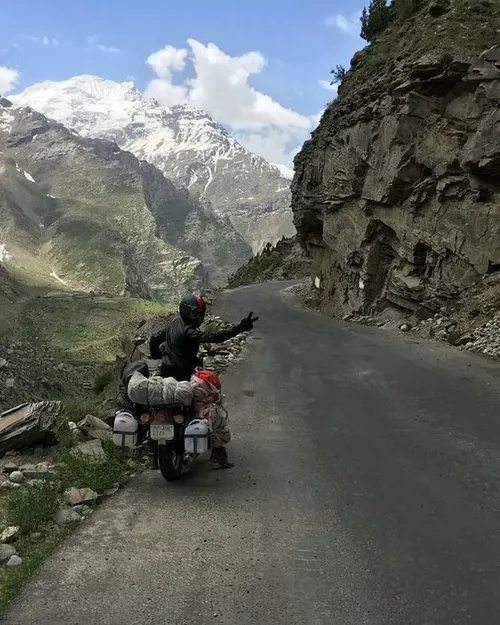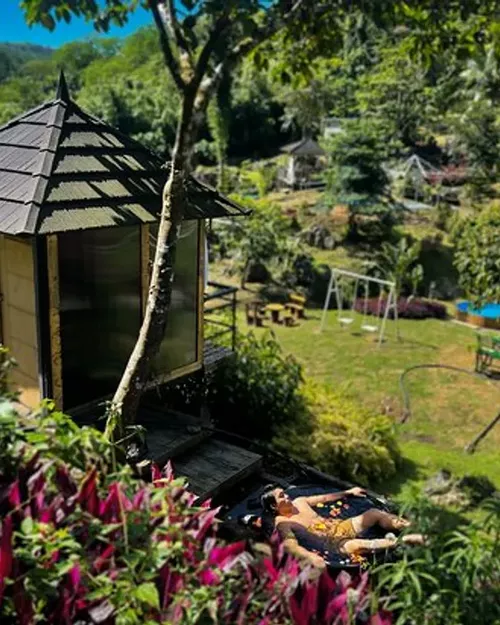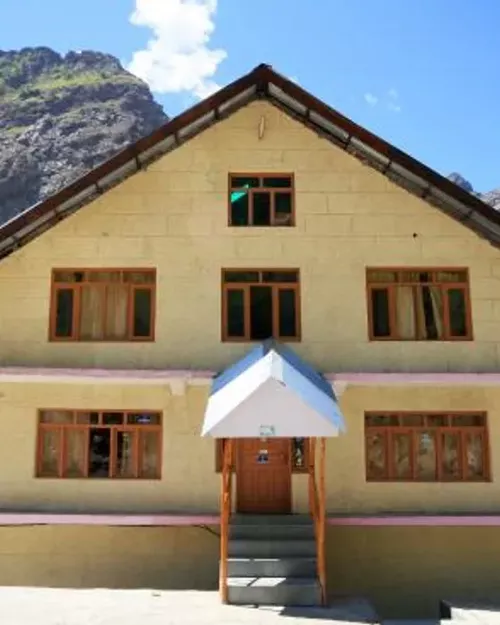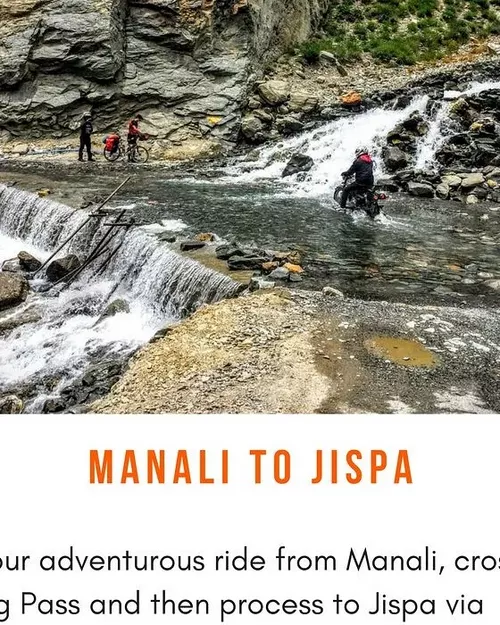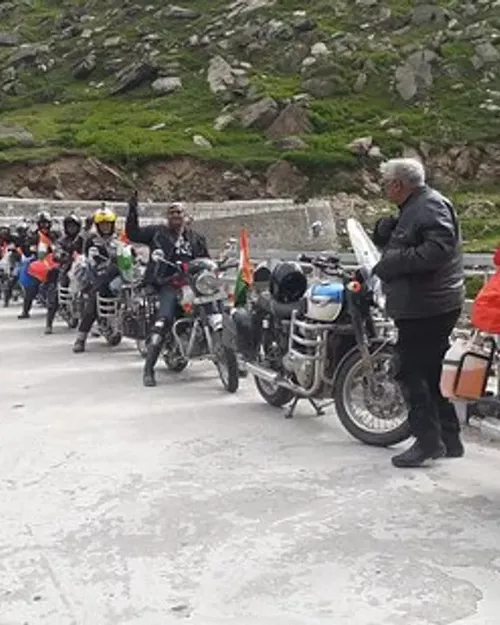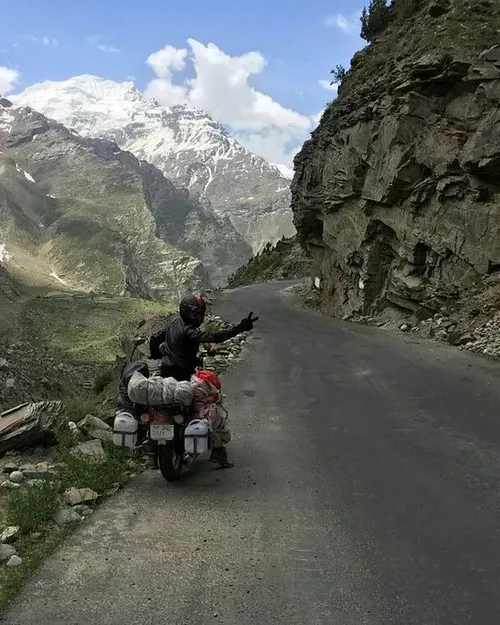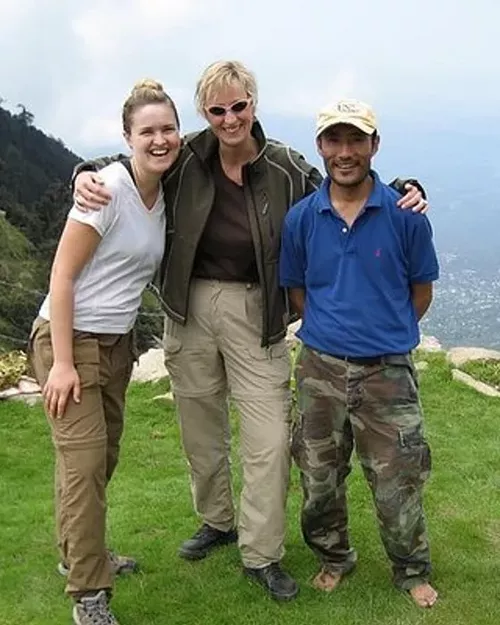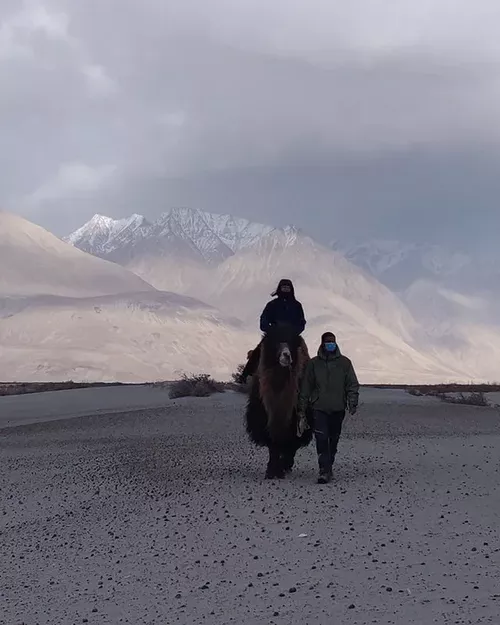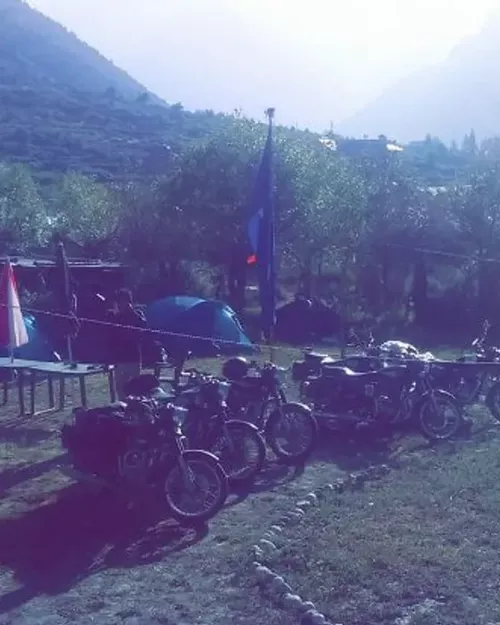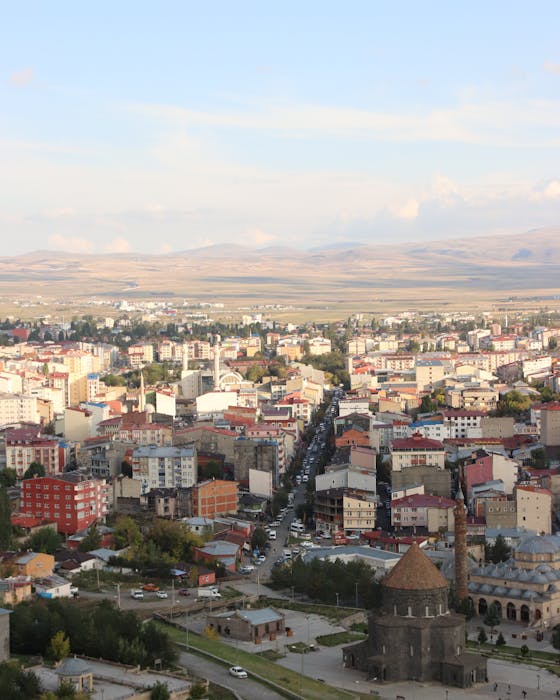Jispa is popular for
Jispa in next 3 month
Weather in Jispa
December in Jispa remains cold with snowfall and poor air quality.
Usual trip duration
A 3-4 day trip to Jispa allows you to explore the stunning natural beauty of the region, including the picturesque landscapes, serene rivers, and snow-capped mountains. You can also indulge in adventure activities like trekking, camping, and river rafting.
Budget friendly destination
Ideas To Plan Your Trip
Places To Visit
Places To Eat
Frequently Asked Questions about Jispa
The best time to visit Jispa, Himachal Pradesh, is from May to October. During these months, the weather is pleasant and ideal for outdoor activities. The snow melts, opening up the roads and trekking routes. Summer (May-June) offers comfortable temperatures, while early autumn (September-October) provides stunning views of the landscape with clear skies. Avoid visiting during the winter months (November to April) due to heavy snowfall and road closures, especially the Rohtang Pass, which connects Jispa to Manali.
Visiting in the shoulder season (May and October) can be advantageous as you'll encounter fewer crowds and potentially lower prices. However, always check the weather forecast and road conditions before planning your trip, as unpredictable weather can sometimes lead to temporary closures.
Reaching Jispa can be an adventure in itself, given its remote location in the Himalayas. Here’s a detailed breakdown of how you can get there:
| Mode of Transport | Details |
|---|---|
| By Road | The most common way to reach Jispa is by road, either from Manali or Keylong. From Manali, you'll need to cross the Rohtang Pass (open from late May/early June to October). You can hire a taxi, take a bus (operated by HRTC), or drive your own vehicle. The journey is approximately 6-8 hours, depending on road conditions. From Keylong, Jispa is about a 1.5-hour drive. Regular buses and taxis are available. |
| By Air | The nearest airport is Kullu-Manali Airport (Bhuntar Airport), which is about 330 km from Jispa. However, flights to Bhuntar are not always reliable due to weather conditions. From Bhuntar, you can hire a taxi or take a bus to Manali and then proceed to Jispa as described above. |
| By Train | The nearest railway station is Joginder Nagar Railway Station, which is a narrow-gauge railway line, about 280 km from Jispa. Another option is Chandigarh Railway Station, which is better connected but much farther (around 550 km). From either station, you'll need to take a bus or hire a taxi to reach Manali and then continue to Jispa by road. |
Regardless of your chosen mode of transport, it is highly advisable to check road conditions and weather forecasts, especially during the monsoon season (July-August), which can cause landslides and road closures. Hiring an experienced driver is recommended, particularly if you're not used to driving in mountainous terrain.
Jispa, a serene village nestled in the Himalayas, serves as an excellent base for exploring the stunning Lahaul Valley. Here are some of the main attractions in and around Jispa:
- Jispa Village: The village itself is a charming attraction, offering a glimpse into local life and culture. Its peaceful atmosphere and stunning views of the surrounding mountains make it a perfect place for relaxation.
- Deepak Tal: A picturesque lake located a short drive from Jispa, Deepak Tal is known for its crystal-clear waters and tranquil ambiance. It’s an ideal spot for photography and enjoying the natural beauty.
- Suraj Tal: Situated closer to Baralacha La, Suraj Tal is another stunning high-altitude lake. It's one of the highest lakes in India and offers breathtaking views of the surrounding snow-capped peaks.
- Baralacha La Pass: A high mountain pass on the Manali-Leh highway, Baralacha La offers panoramic views of the Himalayas. It's a popular stop for travelers and adventure enthusiasts.
- Darcha Village: Located a few kilometers from Jispa, Darcha is the starting point for several trekking routes, including the popular trek to Padum in Zanskar.
- Ghepan Ghat Lake: A relatively unexplored lake near Jispa, Ghepan Ghat is known for its pristine beauty and remote location. It requires a trek to reach and is ideal for those seeking solitude and adventure.
- Keylong: The administrative center of Lahaul and Spiti, Keylong is a bustling town with monasteries, markets, and other attractions. It's easily accessible from Jispa and makes for a worthwhile day trip.
The natural beauty and peaceful environment make Jispa a must-visit destination for nature lovers and adventure seekers.
Jispa offers a variety of activities for adventure enthusiasts and nature lovers. Nestled in the Himalayas, it provides a perfect base for exploring the surrounding landscape and engaging in outdoor adventures. Here are some activities you can enjoy in Jispa:
- Trekking: Jispa is a starting point for several treks, ranging from easy day hikes to multi-day expeditions. Popular treks include the trek to Deepak Tal, Suraj Tal, and the longer trek to Padum in Zanskar.
- Camping: Numerous campsites around Jispa offer a chance to stay amidst nature. Camping under the stars, surrounded by towering mountains, is an unforgettable experience.
- River Rafting: The Bhaga River flowing through Jispa offers opportunities for river rafting. Several operators in the area provide rafting tours for varying skill levels.
- Mountain Biking: The rugged terrain around Jispa is perfect for mountain biking. You can rent a bike and explore the scenic trails at your own pace.
- Photography: The stunning landscapes, including snow-capped peaks, glacial rivers, and serene lakes, make Jispa a photographer's paradise.
- Visit Monasteries: Explore nearby monasteries to experience the local culture and spirituality. Keylong, a short drive from Jispa, has several monasteries worth visiting.
- Stargazing: With minimal light pollution, Jispa offers excellent opportunities for stargazing. On clear nights, you can witness a breathtaking display of stars and planets.
- Nature Walks: Take leisurely walks around Jispa to enjoy the natural beauty and spot local flora and fauna.
While Jispa is not a major shopping hub, you can find some local items and souvenirs to take back home. The shopping options are limited compared to larger towns, but they offer a chance to support local artisans and find unique products. Here are some places and items you might find:
- Local Handicrafts: You can find handmade woolen items such as shawls, sweaters, and caps. These are often made by local women and can be a great way to support the community.
- Tibetan Items: Some shops sell Tibetan prayer flags, prayer wheels, and other religious artifacts.
- Souvenirs: You can find small souvenirs like keychains, magnets, and postcards featuring local landscapes.
- Essential Supplies: There are a few small stores in Jispa where you can buy basic necessities like snacks, toiletries, and medicines.
- Keylong Market: A short drive from Jispa, Keylong offers a wider range of shopping options. You can find more variety in handicrafts, clothing, and other items.
Remember to bargain respectfully and support local businesses when shopping in Jispa. The items you find here will serve as a reminder of your trip to this beautiful Himalayan village.
Jispa offers a range of dining options, from local eateries serving traditional Himachali cuisine to restaurants catering to tourists with multi-cuisine menus. While the options are limited compared to larger cities, you can still find delicious and satisfying meals. Here are some recommended restaurants and food options in Jispa:
- Hotel Ibex: This hotel is known for its restaurant, which serves a variety of Indian, Tibetan, and Continental dishes. The food is generally well-prepared, and the ambiance is pleasant.
- Padma Lodge: Another popular hotel with a restaurant that offers a mix of Indian and Tibetan cuisine. It’s a good place to try local dishes like Thukpa and Momos.
- Local Dhabas: Several small dhabas (roadside eateries) in Jispa serve simple and affordable meals. These are a great option for trying local Himachali food like Rajma Chawal and Kadhi Chawal.
- Himalayan Cafe: A nice stop for Coffee, Tea, Breakfast and Indian food.
- Guest House Restaurants: Many guest houses in Jispa also have in-house restaurants that cater to their guests. These often offer home-cooked meals and a cozy atmosphere.
- Camping Site Restaurants: Campsites will also provide food and drinks.
When dining in Jispa, be sure to try local specialties and enjoy the warm hospitality of the people.
Jispa is strategically located in the Lahaul Valley, making it an excellent base for exploring several nearby destinations. Here are some of the popular places you can visit from Jispa:
| Destination | Distance from Jispa | Highlights |
|---|---|---|
| Keylong | 22 km | Administrative center of Lahaul and Spiti, monasteries, local markets. |
| Darcha | 12 km | Starting point for the trek to Padum in Zanskar, scenic landscapes. |
| Deepak Tal | 47 km | Beautiful high-altitude lake, serene ambiance, ideal for photography. |
| Suraj Tal | 70 km (approx.) | One of the highest lakes in India, stunning views, located near Baralacha La Pass. |
| Baralacha La Pass | 73 km (approx.) | High mountain pass, panoramic views of the Himalayas, challenging terrain. |
| Sissu | 45 km | Scenic village with a waterfall, Sissu Lake, tranquil atmosphere. |
These destinations offer a diverse range of experiences, from exploring remote villages and serene lakes to conquering high mountain passes.
Jispa is situated at an altitude of approximately 3,200 meters (10,500 feet) above sea level. At this altitude, the air is thinner, and oxygen levels are lower, which can lead to altitude sickness (Acute Mountain Sickness or AMS) in some individuals. Proper acclimatization is crucial for a safe and enjoyable trip.
Here are some tips on how to acclimatize to the altitude in Jispa:
- Ascend Gradually: If possible, avoid flying directly to a high-altitude destination. Instead, ascend gradually over a few days. This allows your body to adjust to the lower oxygen levels.
- Stay Hydrated: Drink plenty of water to stay hydrated. Dehydration can worsen the symptoms of altitude sickness. Avoid alcohol and excessive caffeine, as they can dehydrate you.
- Avoid Strenuous Activity: Take it easy on your first day at a higher altitude. Avoid strenuous activities like hiking or running until you're properly acclimatized.
- Eat Light Meals: Consume light, high-carbohydrate meals. Avoid heavy, fatty foods, as they can be difficult to digest at higher altitudes.
- Avoid Alcohol and Smoking: Alcohol and smoking can reduce the amount of oxygen in your blood and worsen the symptoms of altitude sickness.
- Descend if Symptoms Worsen: If you experience severe symptoms of altitude sickness, such as severe headache, nausea, vomiting, or difficulty breathing, descend to a lower altitude immediately.
- Medications: Consult your doctor about medications like acetazolamide (Diamox), which can help prevent and treat altitude sickness. However, these medications should be taken under medical supervision.
By following these tips, you can minimize the risk of altitude sickness and enjoy your time in Jispa.
Packing the right clothing for Jispa is essential due to its high altitude and variable weather conditions. Even during the summer months, temperatures can fluctuate, and it's important to be prepared for both warm and cold weather. Here’s a guide to what you should pack:
- Thermal Underwear: Pack thermal tops and bottoms to wear as a base layer. These will help to keep you warm in cold weather.
- Fleece Jacket or Sweater: A warm fleece jacket or sweater is a must-have for layering. It can be worn over your base layer and under your outer jacket.
- Insulated Outer Jacket: Bring a waterproof and windproof insulated jacket. This will protect you from rain, snow, and cold winds.
- Comfortable Pants: Pack a pair of comfortable, quick-drying pants for hiking and exploring.
- Waterproof Pants: Waterproof pants are essential, especially if you plan on trekking or being outdoors in wet conditions.
- Warm Socks: Pack several pairs of warm, moisture-wicking socks. Wool or synthetic socks are ideal.
- Gloves or Mittens: Bring warm gloves or mittens to protect your hands from the cold.
- Hat or Beanie: A warm hat or beanie is essential for keeping your head warm.
- Sunglasses: Sunglasses are important for protecting your eyes from the glare of the sun, especially at high altitudes.
- Comfortable Hiking Boots: If you plan on trekking, bring a pair of sturdy, comfortable hiking boots with good ankle support.
- Casual Shoes: Pack a pair of comfortable casual shoes for wearing around town.
Remember to dress in layers so you can easily adjust your clothing to the changing weather conditions. It's always better to be over-prepared than under-prepared when it comes to clothing in Jispa.
Visiting Jispa requires some preparation to ensure a smooth and enjoyable trip. Here are some essential travel tips to keep in mind:
- Check Weather and Road Conditions: Before you travel, check the weather forecast and road conditions, especially if you're traveling during the monsoon season or winter months.
- Acclimatize to the Altitude: Jispa is located at a high altitude, so it's important to acclimatize properly to avoid altitude sickness. Ascend gradually, stay hydrated, and avoid strenuous activities on your first day.
- Carry Cash: ATMs are limited in Jispa and surrounding areas, so it's advisable to carry enough cash to cover your expenses.
- Pack Appropriately: Pack warm clothing, including thermal underwear, fleece jackets, and insulated outer layers. Also, bring comfortable hiking boots, sunglasses, and sunscreen.
- Stay Hydrated: Drink plenty of water to stay hydrated, especially at high altitudes.
- Travel Insurance: Consider purchasing travel insurance that covers medical emergencies and trip cancellations.
- Respect Local Culture: Be respectful of local customs and traditions. Dress modestly when visiting religious sites.
- Carry Basic Medications: Bring a basic first-aid kit with essentials like pain relievers, antiseptic wipes, and band-aids. Also, carry any prescription medications you need.
- Book Accommodation in Advance: During peak season, it's advisable to book your accommodation in advance to ensure you have a place to stay.
- Be Prepared for Power Outages: Power outages are common in Jispa, so be prepared with a power bank for charging your electronic devices.
- Hire an Experienced Driver: If you're driving, consider hiring an experienced driver who is familiar with the mountainous terrain.
By following these tips, you can have a safe and memorable trip to Jispa.
Medical facilities in Jispa are limited, which is common in remote Himalayan regions. It’s important to be aware of this and take necessary precautions. Here’s what you should know about medical facilities in and around Jispa:
- Basic Medical Assistance: Jispa has a small health center that can provide basic medical assistance. However, it may not be equipped to handle serious medical emergencies.
- Keylong: Keylong, which is about 22 km from Jispa, has a larger hospital and better medical facilities. If you require more comprehensive medical care, Keylong is the closest option.
- First Aid: It’s advisable to carry a well-stocked first-aid kit with essentials like pain relievers, antiseptic wipes, bandages, and any personal medications you require.
- Altitude Sickness: Be aware of the symptoms of altitude sickness and take necessary precautions to acclimatize properly. If you experience severe symptoms, seek medical attention immediately.
- Medical Evacuation: In case of a serious medical emergency, medical evacuation may be necessary. Make sure your travel insurance covers medical evacuation from remote areas.
- Consult Your Doctor: Before traveling to Jispa, consult your doctor, especially if you have any pre-existing medical conditions. They can provide advice on necessary vaccinations and medications to carry.
Given the limited medical facilities in Jispa, it’s essential to be well-prepared and take necessary precautions to ensure your health and safety.
ATMs in Jispa are scarce, making it essential to plan your finances accordingly before traveling to this remote location. Here’s what you need to know about ATMs in Jispa and how to manage your money:
- Limited Availability: Jispa has very few ATMs, and their reliability can be questionable. They may be out of service or run out of cash, especially during peak tourist season.
- Keylong: Keylong, the administrative center of Lahaul and Spiti, has a few ATMs. However, it's still advisable to carry enough cash, as these ATMs may also be unreliable.
- Carry Enough Cash: The best approach is to carry enough cash to cover all your expenses in Jispa and surrounding areas. Estimate your costs for accommodation, food, transportation, and activities, and bring sufficient cash accordingly.
- Small Denominations: It's helpful to carry cash in small denominations, as it can be difficult to get change in smaller establishments.
- Inform Your Bank: Inform your bank about your travel plans so they don't block your card for suspicious activity when you try to withdraw cash from ATMs in the region.
- Credit/Debit Cards: Credit and debit cards are not widely accepted in Jispa, especially in smaller establishments. It’s best to rely on cash for most transactions.
Planning your finances and carrying enough cash is crucial for a hassle-free trip to Jispa.




